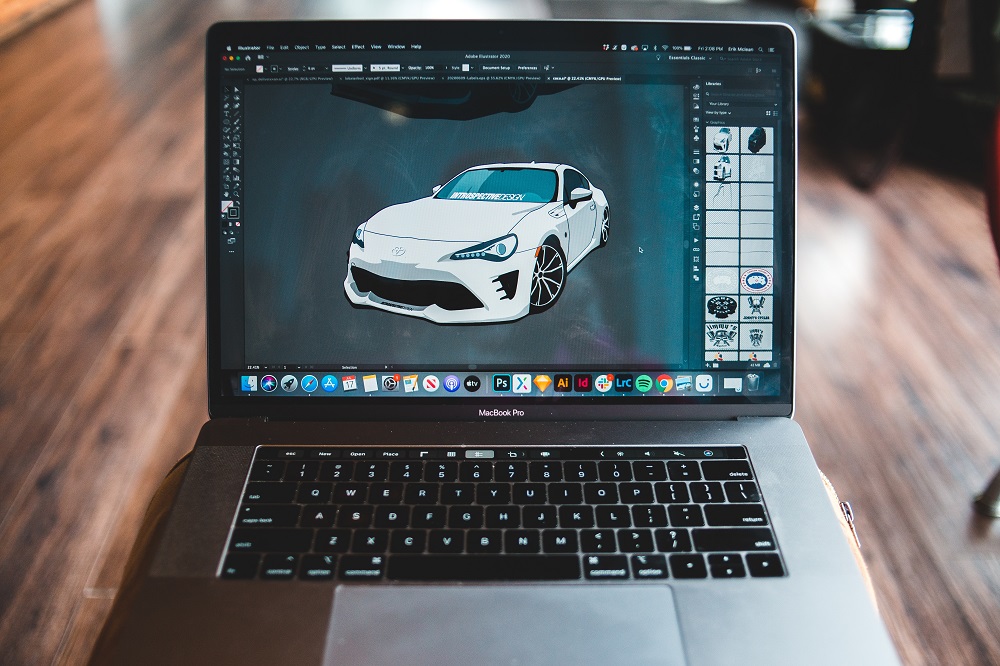Are you drawn to eye-catching visuals? Do you find yourself admiring the creativity behind a well-designed logo or poster? If so, then graphic design is an art form that has likely captured your attention. Graphic design is all about communicating ideas through visual elements such as typography, images, and color. From billboards to websites, graphic designers use their skills and creativity to convey messages in compelling ways. In this blog post, we’ll explore the world of graphic design – its history, principles, and contemporary applications – and discover how it continues to shape our visual landscape today.
Introduction to Graphic Design
Graphic Design is an art form that combines creativity, communication, and technology to create visual solutions for a variety of purposes. It is the process of creating visual content that communicates ideas and messages through various mediums.
The importance of graphic design in today’s world cannot be overstated. From advertising campaigns to websites, packaging designs to social media posts, graphic design plays a crucial role in shaping how we perceive the world around us.
At its core, graphic design involves the use of typography, color theory, imagery and layout techniques to create impactful visuals that can tell stories or convey complex information. The goal is not just to make something visually appealing but also to communicate a message effectively.
To become a successful designer requires mastery over several software tools such as Adobe Photoshop, Illustrator and InDesign among others. A deep understanding of fundamental design principles like balance proportion contrast etc., is also essential for success in this field.
In summary Graphic Designers are problem solvers who specialize in crafting compelling visuals that engage audiences across different platforms from print ads to social media graphics without compromising on brand identity or messaging goals.
The Elements of Graphic Design
The elements of graphic design are the building blocks that designers use to create visual compositions. These elements include line, shape, color, texture, space and form. Understanding these elements is crucial to creating effective designs that communicate ideas clearly.
Line is a fundamental element of graphic design which can be used to divide space, create patterns or convey movement. Shapes are created by combining lines and can take on various forms such as circles or triangles.
Color is an important aspect that affects mood and emotion in design. It’s essential to choose colors appropriately based on the message being conveyed. Texture refers to the surface quality of objects in a composition which can add depth and interest.
Space involves how objects are arranged in relation to each other within a composition while form refers to 3D objects represented in 2D graphics.
By utilizing these elements effectively and creatively, designers can deliver compelling visuals that accurately reflect their intended message while captivating their audience at the same time.
The Principles of Graphic Design
The principles of graphic design are the guidelines that designers follow to create effective visual communication. These principles include balance, contrast, emphasis, harmony, proportion and unity.
Balance is essential in graphic design since it helps distribute elements equally across a layout. Symmetrical balance involves mirroring an image or text from one side to another while asymmetrical balance uses different sizes and shapes to create equilibrium.
Contrast refers to the difference between elements in a design. Contrast can be achieved by using contrasting colors or fonts, varying font size or weight as well as juxtaposing light and dark tones.
Emphasis is used in designs where certain elements need more attention than others. This can be done through color or size variations on specific features like headings and subheadings.
Harmony entails creating a sense of connectedness among various design components such as images and typography. It’s about ensuring all visual aspects work together cohesively rather than competing for attention.
Proportion ensures that each element within a design has its rightful place based on its relationship with other parts of the composition. Proportion is vital because it influences how people perceive your message visually.
Unity brings everything together into a cohesive whole-considering every aspect from color choices down to spacing between letters-to make sure they all work together towards achieving your desired goal.
The History of Graphic Design
The history of graphic design is a long and fascinating one, tracing back to the earliest forms of human communication.
From cave paintings in prehistoric times to illuminated manuscripts in medieval Europe, humans have always used visual elements to convey ideas.
However, it wasn’t until the invention of printing press in the 15th century that graphic design began to take on its modern form.
With books becoming more widely available and literacy rates increasing, there was a growing need for printed materials.
These materials are not only informative but also aesthetically pleasing.
The Industrial Revolution further propelled the development of graphic design with advances in technology allowing for mass production of posters, advertisements and other printed materials.
Art movements such as Art Nouveau and Bauhaus also had a significant impact on the field by introducing new styles and techniques.
In the mid-20th century, graphic design became even more important with the rise of television advertising and corporate branding.
Designers like Paul Rand created iconic logos for companies such as IBM while Saul Bass revolutionized film title sequences.
Today, graphic design continues to evolve alongside technology with digital media playing an increasingly important role.
From web graphics to social media posts, designers must adapt their skills to meet changing demands while still honoring traditional principles established over centuries ago.
Contemporary Graphic Design

Contemporary graphic design is a constantly evolving field that reflects the trends of modern society.
With the rise of technology and digital media, designers are incorporating new techniques and tools into their work.
One trend in contemporary graphic design is minimalism, where designers use simple shapes, colors, and typography to create clean designs.
Another trend is the use of bold colors and patterns to make a statement or evoke emotion.
In addition to traditional print media such as posters and brochures, contemporary graphic designers are also creating digital designs.
They create designs for websites, social media platforms, and mobile devices.
This has led to an increased focus on user experience (UX) design which aims to make interfaces intuitive and easy to navigate.
Another important aspect of contemporary graphic design is sustainability.
Many designers are now using eco-friendly materials in their work or finding innovative ways to repurpose existing materials.
Contemporary graphic design continues to push boundaries with its creativity while adapting to changing technological landscapes and societal values.
Conclusion
To wrap up, the art of graphic design is an incredible field that spans centuries and continues to evolve with technology.
It’s a crucial aspect of visual communication that helps bring ideas to life in ways words cannot.
By understanding the elements and principles of graphic design, designers can create visually stunning pieces that communicate their intended message effectively.
Moreover, contemporary graphic design has opened new avenues for artists who want to experiment with different styles and techniques.
With so many tools available today, it’s easier than ever before for aspiring designers to hone their skills.
With this, they could make a name for themselves in this dynamic industry.
By mastering the art of graphic design, you’ll not only be able to create visually compelling designs but also communicate your ideas through visuals effectively.
Whether you’re designing logos, websites or print materials – keep these fundamental principles in mind, stay creative and enjoy exploring the vast world of graphic design!








